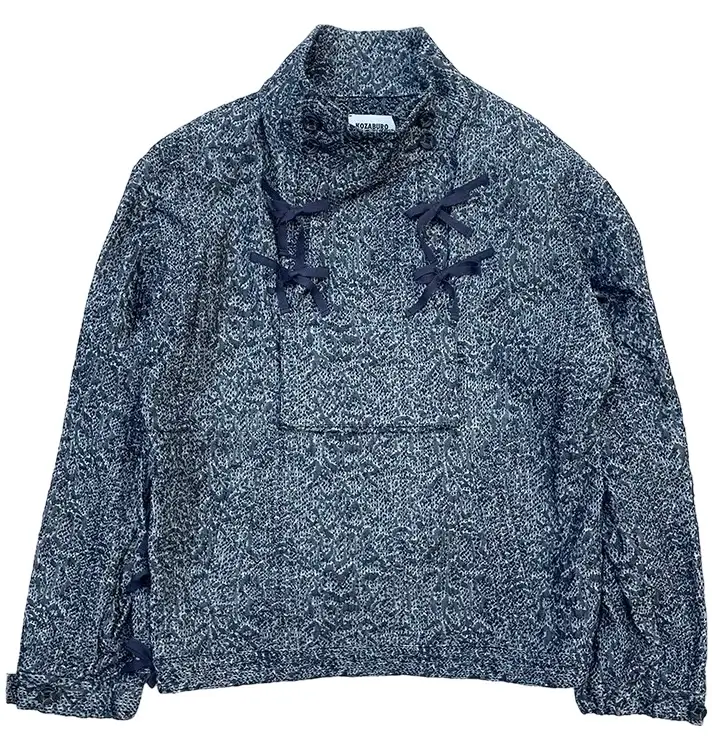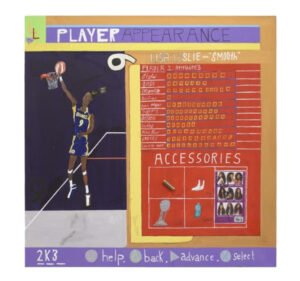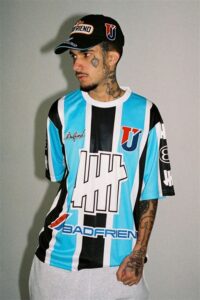In a bold pivot away from Parisian grandeur and back to the architectural marrow of its Danish origin, Rains unveiled its Fall/Winter 2025 collection—Forever—inside its newly constructed headquarters in Aarhus. Marking the brand’s tenth runway outing, this homecoming presentation was as much a celebration of functional innovation as it was a personal narrative inscribed in material, silhouette, and space. For founders Philip Lotko and Daniel Brix Hesselager, this season was not merely a collection—it was a statement on permanence, resilience, and continuity.
A Space as Conceptual Framework
The new Rains headquarters—part atelier, part testing ground—played a central role in framing the Forever collection. The architecture mirrored the collection’s DNA: brutalist materiality softened by functional elegance. Concrete walls, brushed steel trusses, and warm wood insertions formed a spatial dialogue with the garments on display. A low-lit rectangular hall served as the runway, where raw textures in the environment acted as an extension of the textiles themselves. This convergence of environment and clothing underscored the central thesis of the collection: permanence in the face of impermanence.
With only forty guests present, the show resisted theatrical excess in favor of intimacy and clarity. Every garment could be read with architectural precision.
Title as Thesis:
Forever
The collection’s title—Forever—was both provocative and ironic. In a time of climate anxiety and unstable geopolitical contexts, permanence is elusive. Yet Rains, a brand built around weatherproofing, turned this into a challenge: can garments be made not just to withstand the elements but to embody timeless design language?
The answer unfolded in thirty rigorously engineered looks that advanced Rains’ core mission: protective outerwear that doesn’t compromise visual purity. The result was a collection that balanced utilitarian demands with refined minimalism and unexpected sensory play.
Technical Materials: Expanding the PU Language
At the material core of Forever was Rains’ signature polyurethane (PU)-coated fabric, a synthetic material that has defined the brand’s outerwear since its founding. This season, however, the PU received a series of technical recalibrations.
Three primary textile innovations stood out:
- Micro-textured PU: Achieved through a custom embossing process, this fabric offered a granular tactile finish while preserving water-resistance and flexibility. Applied to cropped bombers and modular anoraks, it provided a new visual rhythm that elevated the surface language of traditional rainwear.
- Thermal-bonded PU blends: Lightweight yet insulating, this material was used in hybrid puffers and longline trench coats. Bonded with performance fleece, it created dual-structure garments that regulated heat while maintaining full waterproof integrity.
- Matte-iridescent PU: A chameleonic finish debuted on a mid-length parka and a soft-shell cloak. Under static light, it appeared matte; under motion or flash, subtle hues—green, slate, graphite—emerged, adding atmospheric dynamism without relying on prints.
This expansion of the PU category reasserted Rains’ commitment to functional fabrication without succumbing to aesthetic stagnation.
Silhouettes: Geometric Fluidity
Rains’ Fall/Winter 2025 silhouettes adhered to a strict visual lexicon—rectilinear geometry, modular layering, and exaggerated proportions. Yet within this framework, subtle gestures of human softness emerged.
- Outerwear Volume: Puffer jackets—once utilitarian bulks—became architectural elements. Key styles featured broad, square shoulders tapering into cinched hems, achieved using internal suspension cords. These gave the garments adjustable volume, allowing them to transition from cocoon to streamlined shell in real time.
- Layering Logic: Layering was executed with modular intentionality. Look 14, for example, featured a translucent mesh base layer, a midweight PU overshirt, and a neoprene gilet, all in tonal blacks. The visual hierarchy emphasized Rains’ philosophy: garments are systems, not standalone objects.
- Unexpected Drapery: For the first time, the brand introduced diagonal bias cuts in technical fabrics—a move typically avoided due to the rigidity of PU. A floor-length coat with an asymmetrical hem and spiral zipper closure displayed this innovation. The garment flowed despite its material density, a testament to the engineering behind its cut.
Color Palette: Monochrome Interrupted
Rains has always operated within a muted spectrum—charcoal, concrete, cloud, ink. Forever continued this palette but injected it with strategic chromatic interruptions.
- Neon-Green: Only three looks featured this bold tone. It appeared first in a featherweight shell suit, then in fleece-lined trousers, and finally in the standout finale coat. This green served not as a trend play, but as a symbolic gesture—a digital glitch in an analog world, a memory of high-visibility safety gear.
- Subtone Layering: Within the monochrome looks, the brand achieved depth through contrast in texture and finish rather than color. For example, combining matte PU outer shells with high-gloss thermoplastic fastenings, or pairing brushed neoprene with glass-finished nylon created silent complexity.
Tactility as Expression
Perhaps the most surprising development this season was the elevation of tactile elements. Known for its clean, flat surfaces, Rains flirted with fuzz, fluff, and fleece. But not randomly.
- Textural Juxtaposition: A standout look—Look 25—featured a clean, matte bomber jacket paired with exaggerated furry trousers made from recycled synthetic fibers. The result was a garment that teased the eye and hand alike.
- Hybrid Fleece Coats: Unlike conventional fleece, which can appear bulky or athletic, Rains’ version was sheared and tightly woven. Used as both lining and visible surface, it offered warmth without visual noise. Paired with PU shell segments, these coats read as “textile palimpsests,” revealing layers of functionality beneath their surfaces.
Hardware and Closure Systems
True to its technical identity, Rains rethought fastening systems not merely as closures but as design elements.
- Central Zippers: The majority of the looks featured a single central zipper running from neck to hem. These were no ordinary closures—engineered with water-resistant rubberized tracks and looped toggles for gloved hands. In many cases, they served as the only decorative detail, emphasizing line purity.
- Magnetic Flaps: Several outerwear pieces replaced traditional buttons with embedded magnets—creating seamless closures that snapped shut automatically. This innovation preserved the garment’s visual cleanliness while increasing usability in inclement weather.
- Modular Attachment Points: Select jackets and vests featured hidden loops and docking points, allowing for accessories—pouches, hoods, arm gaiters—to be clipped or zipped in. This created a form of garment “ecosystem,” responsive to context and user preference.
Accessories: Functional Extensions
Accessories played a subtler role than in previous seasons, but they deepened the Forever narrative.
- Hybrid Bags: Crossbody bags and utility slings were integrated into outerwear, sometimes appearing as extensions of the coat body. Constructed in thermo-molded PU, they retained form even when empty.
- Oversized Headwear: Bucket hats with elongated neck panels and balaclavas constructed from neoprene-fleece blends offered full protection. The designs fused alpine sportswear with urban sensibility.
- Glove-Garment Integration: Perhaps the most avant-garde accessory design was the glove-sleeve hybrid—a concept piece where a puffer sleeve terminated in a built-in glove, eliminating the cold gap between wrist and hand. It blurred the line between clothing and interface.
The Finale: Coat as Monument
The show concluded with Look 30, a floor-length coat that can only be described as Rains’ manifesto in garment form. The upper torso was constructed from high-gloss, waterproof PU, while the lower half erupted into cascading shag strands that reached the floor.
This fusion—rigid weather protection above, tactile chaos below—epitomized the duality at the heart of Forever. It was both sculpture and shelter, both engineered and emotive. It proposed that utility need not deny expression—that outerwear can protect while provoking.
As the model turned and walked into the darkness, the coat’s lower fringe swept the concrete floor like a mop cleaning up after the apocalypse.
Conclusion: Designing for a Shifting Climate
Forever is more than a seasonal offering. It’s a response to environmental volatility and cultural overstimulation. In lieu of embellishment, Rains offered structure, system, and surface. In place of trend-chasing, the brand proposed materials that adapt and silhouettes that endure.
By retreating from Paris and returning to Aarhus, Rains made a declaration: meaningful design is born from context, not spectacle. And through Forever, they’ve asserted a new vision for outerwear—one that holds fast in rain, wind, crisis, and time.
No comments yet.









